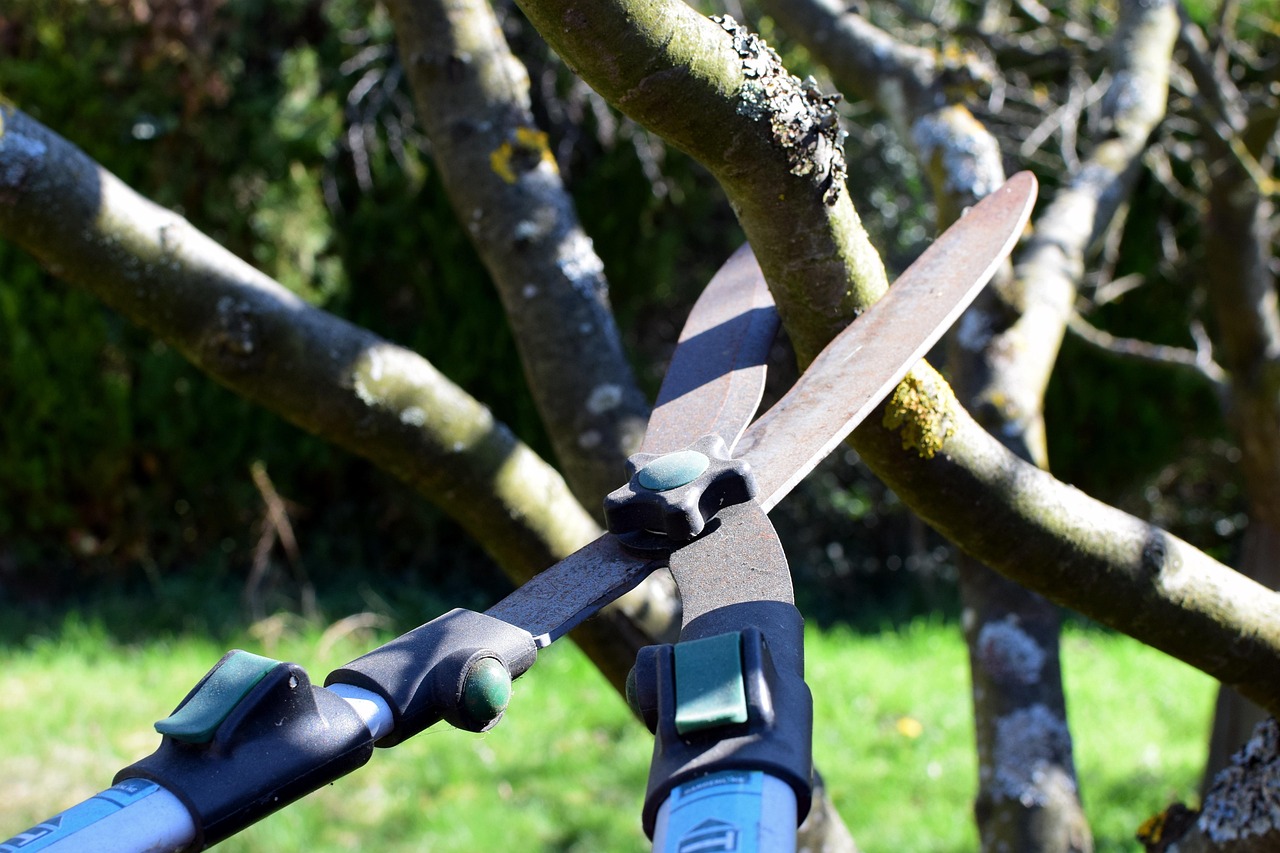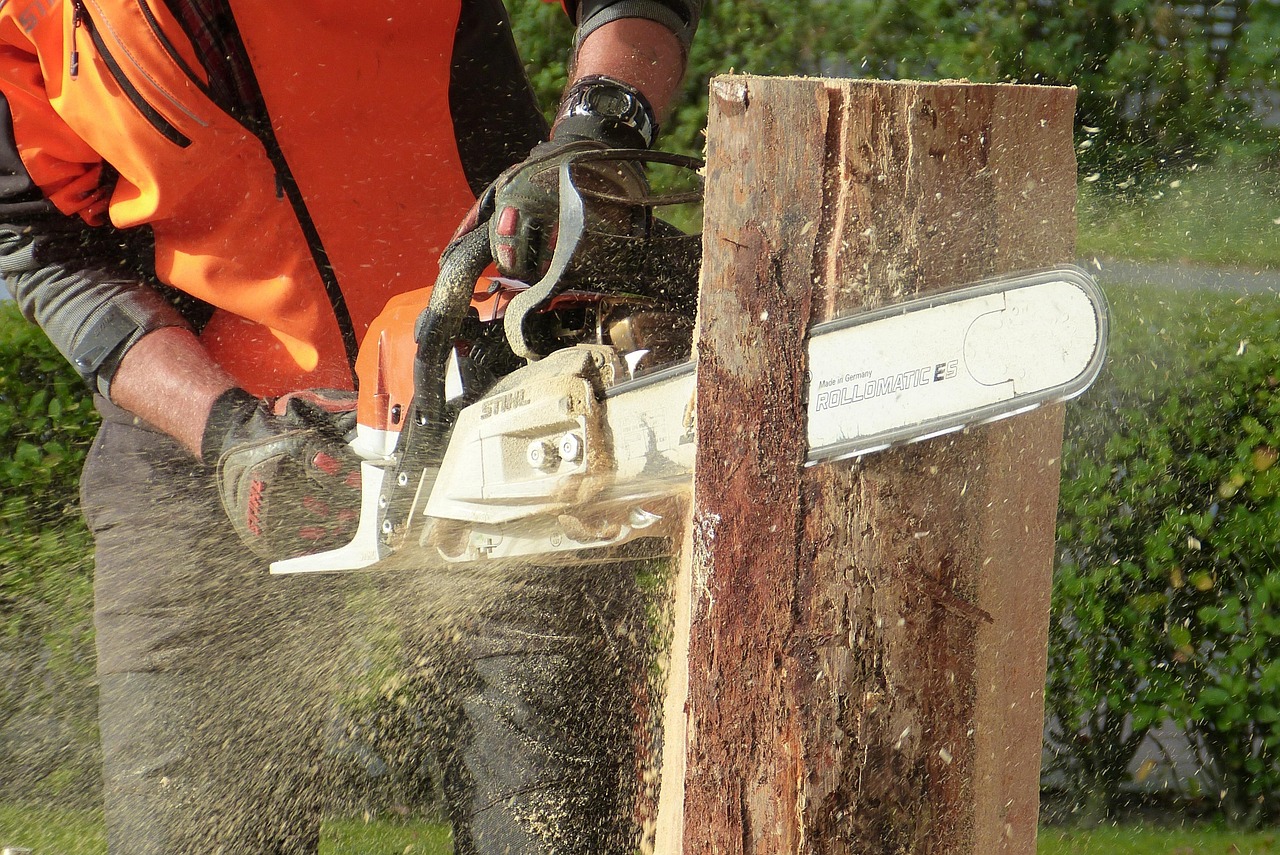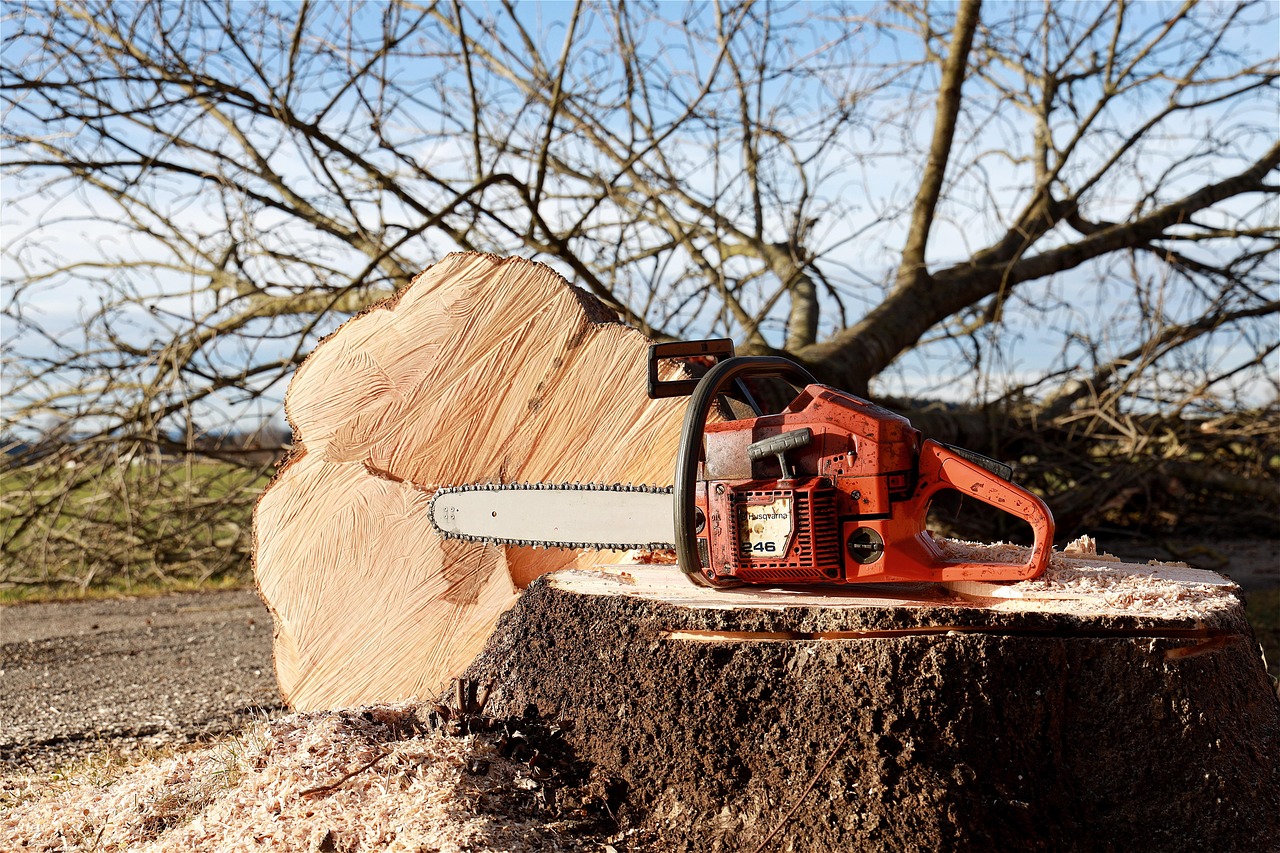Tree pruning certification programs equip aspiring professionals with the necessary skills and knowledge to effectively manage and maintain trees. These programs cover various techniques, safety protocols, and industry standards that enhance a participant’s qualifications in arboriculture.
Tree care is a vital aspect of urban and rural forestry. As urban areas expand, the need for trained professionals in tree management becomes increasingly important. Pruning, in particular, plays a crucial role in promoting healthy tree growth, preventing disease, and ensuring safety in public spaces. With this rising demand, certification programs offer structured training and validation of skills for individuals looking to enter this field.

Certification programs typically include both theoretical knowledge and practical hands-on experience. Participants learn about tree biology, pruning techniques, safety measures, and equipment handling. Moreover, obtaining certification can significantly enhance a professional’s credibility, making them more attractive to employers in landscaping, horticulture, and arboriculture.
Importance of Tree Pruning Certification
Tree pruning is not merely about cutting branches; it involves a deep understanding of tree health and growth patterns. Here are some key reasons why certification in tree pruning is essential:
- Enhanced Knowledge: Certification programs provide comprehensive education on tree species, growth habits, and ecological impacts.
- Improved Skills: Participants gain practical skills in various pruning techniques tailored to different tree types and environments.
- Safety Training: Proper training prevents accidents and injuries associated with tree work, ensuring both the worker’s safety and that of the environment.
- Industry Standards: Certified professionals adhere to established standards and best practices in tree care, promoting quality service.
- Career Advancement: Certification can open doors to job opportunities and higher salaries within the arboriculture industry.
Overview of Certification Programs
Various organizations offer tree pruning certification programs. These programs can vary in terms of length, content, and prerequisites. Here are some common features of these certification courses:

| Program Name | Provider | Duration | Prerequisites | Certification Validity |
|---|---|---|---|---|
| Certified Arborist | International Society of Arboriculture (ISA) | Varies (typically several weeks) | 3 years of experience or related degree | 3 years (renewable) |
| Tree Pruning Specialist | Tree Care Industry Association (TCIA) | 1-2 days | No formal prerequisites | 5 years (renewable) |
| Certified Tree Worker | ISA | Varies (includes practical exams) | No formal prerequisites | 3 years (renewable) |
The above table highlights some prominent certification programs available. Each program has its own focus areas and may cater to different levels of experience. Participants should evaluate their career goals and choose a program that aligns with their aspirations.
Key Components of Tree Pruning Certification Programs
Most certification programs share common components that ensure participants receive a well-rounded education. These components often include:
- Theory Lessons: Detailed courses on tree biology, types of pruning cuts, and understanding tree structure.
- Practical Training: Hands-on workshops where participants practice pruning techniques on live trees under supervision.
- Safety Protocols: Instruction on using personal protective equipment (PPE) and safe handling of tools.
- Assessment: Written exams and practical assessments to evaluate the skills learned during the program.
- Continuing Education: Opportunities for ongoing training to keep up with changes in industry standards and practices.
The combination of theory and practice ensures that certified professionals are well-prepared to face the challenges of tree care. They learn not only how to prune effectively but also how to assess the health of trees and make informed decisions regarding their maintenance.

The investment in a tree pruning certification program can pay off significantly for aspiring professionals. With the right credentials, individuals can position themselves as experts in the field, providing valuable services to communities while promoting the health of urban forests.
Types of Tree Pruning Techniques
Understanding various tree pruning techniques is essential for aspiring professionals. Each method has specific applications and outcomes. Here are some of the most commonly used pruning techniques:
- Thinning: This technique involves removing specific branches to improve light penetration and air circulation within the tree’s canopy.
- Heading: Heading cuts reduce the length of branches. This promotes bushier growth by encouraging lateral buds to sprout.
- Reduction: Reduction pruning decreases the size of a tree or shrub while maintaining its natural shape. It is often used for trees that have outgrown their space.
- Cleaning: This method removes dead, damaged, or diseased branches. Cleaning helps maintain tree health and aesthetics.
- Raising: Raising involves removing lower branches to increase clearance and access beneath the tree.
Each of these techniques serves different purposes and can significantly impact the overall health and appearance of trees. Learning when and how to apply these methods is a critical component of tree pruning certification programs.

The Role of Safety in Tree Pruning
Safety is a paramount concern in tree pruning. Professionals must be well-versed in safety protocols to prevent accidents and injuries. Key aspects of safety training include:
- Personal Protective Equipment (PPE): Wearing appropriate gear such as helmets, gloves, eye protection, and harnesses is essential during tree work.
- Tool Safety: Understanding how to use and maintain tools like saws, pruners, and chainsaws reduces the risk of accidents.
- Worksite Assessment: Evaluating the work environment for hazards, including overhead power lines, unstable ground, and nearby traffic, is crucial before starting any job.
- Emergency Procedures: Knowing how to respond in case of an emergency, including first aid practices, can save lives.
Certification programs emphasize these safety elements to ensure that participants can perform their duties confidently and responsibly.
Understanding Tree Biology
A solid understanding of tree biology is fundamental for effective pruning. Participants in certification programs learn about:
- Anatomy of Trees: Knowledge of parts such as roots, trunk, branches, and leaves helps professionals understand how trees grow and respond to pruning.
- Growth Patterns: Understanding how different species grow informs decisions about when and how to prune.
- Tree Health: Recognizing signs of stress or disease allows professionals to make informed decisions that promote long-term health.
This knowledge is valuable in planning pruning activities and ensuring that trees remain healthy after maintenance. The relationship between pruning practices and tree biology is a central theme in many certification courses.
Continuing Education Opportunities
The field of arboriculture is continually evolving. Therefore, ongoing education is essential for certified professionals. Here are some common avenues for continuing education:
- Workshops: Short-term workshops provide hands-on training in new techniques or technologies related to tree care.
- Webinars: Online seminars allow professionals to learn from experts without traveling, covering various topics relevant to tree care.
- Conferences: Industry conferences gather professionals to discuss trends, share experiences, and network with peers.
- Certification Renewal Courses: Many certification programs require periodic renewal, which can include additional courses or assessments.
Engaging in continuing education helps professionals stay current with industry standards and best practices. This commitment not only enhances individual skills but also contributes to the overall quality of tree care services in the community.
The Path to Certification
The journey toward obtaining tree pruning certification typically involves several steps. Aspiring professionals should consider the following:
- Research Certification Programs: Investigate various programs to find one that aligns with your career goals and interests.
- Satisfy Prerequisites: Ensure you meet any experience or educational requirements before applying for a program.
- Complete Coursework: Attend classes and participate in hands-on training sessions as required by the program.
- Sit for Exams: Successfully pass written tests and practical evaluations to demonstrate your knowledge and skills.
- Obtain Certification: After meeting all requirements, receive your certification and celebrate this significant milestone.
This structured pathway helps individuals acquire the necessary skills while providing a clear roadmap toward achieving professional aspirations in tree care.
The effort invested in pursuing certification will not only enhance individual capabilities but also contribute positively to the community by promoting healthier urban forests through professional tree care practices.
Career Opportunities for Certified Tree Pruners
Obtaining certification in tree pruning opens a variety of career paths for professionals. With the increasing importance of urban forestry and landscape management, certified individuals are in high demand. Here are some potential career opportunities available to those who complete tree pruning certification programs:
- Arborist: Certified arborists provide specialized tree care services, including pruning, planting, and diagnosing tree health issues.
- Landscape Technician: Professionals in this role manage and maintain landscapes, which often includes tree care and pruning tasks.
- Urban Forester: Urban foresters work with city planners to manage tree populations in urban areas, focusing on sustainability and environmental health.
- Tree Care Consultant: Consultants offer expert advice on tree management practices and help organizations develop tree care plans.
- Park Ranger: Rangers manage public parks and recreational areas, ensuring that trees and other vegetation are healthy and safe for visitors.
Each of these positions requires a thorough understanding of tree care principles and practices. Having a certification not only enhances one’s resume but also demonstrates a commitment to professional development in the field of arboriculture.
Industry Demand for Certified Professionals
The demand for certified tree care professionals continues to grow as more people recognize the importance of maintaining healthy trees. Factors contributing to this increasing demand include:
- Urbanization: As cities expand, so does the need for effective tree management to ensure environmental health and aesthetic appeal.
- Environmental Awareness: Growing public awareness about the benefits of trees, such as reducing air pollution and providing shade, drives demand for qualified arborists.
- Climate Change Impact: Trees play a crucial role in combating climate change, leading to increased investments in urban forestry initiatives.
- Public Safety Concerns: Proper tree maintenance can reduce hazards associated with dead or diseased trees, prompting municipalities to seek certified professionals.
With these factors in play, individuals with tree pruning certification can expect a favorable job market and various opportunities for career advancement.
Networking and Professional Organizations
Networking plays a critical role in career development within the arboriculture industry. Joining professional organizations can provide valuable connections, resources, and opportunities for continuing education. Here are some notable organizations:
- International Society of Arboriculture (ISA): A leading organization that offers certifications, educational resources, and networking opportunities for arborists worldwide.
- Tree Care Industry Association (TCIA): Focuses on promoting the tree care industry through advocacy, education, and best practices.
- National Association of Landscape Professionals (NALP): Provides resources for landscape professionals, including tree care specialists, to enhance their skills and connect with peers.
- Society of Municipal Arborists (SMA): An organization dedicated to urban forestry and municipal tree care, offering resources tailored for public sector professionals.
Becoming a member of these organizations allows certified professionals to stay informed about industry trends, participate in training sessions, and access a network of peers who can share insights and job leads.
The Importance of Ethical Practices in Tree Care
Ethical considerations are critical in tree care. Certified professionals must adhere to best practices that prioritize the health of trees and the safety of the public. Key ethical practices include:
- Integrity: Always provide honest assessments of tree health and necessary care without overstating problems or recommending unnecessary services.
- Sustainability: Promote sustainable practices that protect the environment and enhance biodiversity while conducting tree maintenance.
- Community Engagement: Engage with the community to educate the public about the benefits of trees and the importance of proper care.
- Respect for Nature: Make decisions that prioritize the well-being of trees over profit, ensuring that interventions do not harm the ecosystem.
By fostering ethical practices, certified professionals contribute to the broader goal of responsible stewardship of urban forests and natural resources.
The Financial Investment in Certification Programs
Pursuing tree pruning certification involves financial considerations. Costs can vary significantly based on program length, format, and institution. Important financial aspects include:
- Tuition Fees: Many certification programs charge tuition fees that cover course materials, instruction, and assessments.
- Materials and Equipment: Participants may need to purchase tools or materials required for hands-on training.
- Travel Expenses: If attending in-person classes or workshops, travel costs may be incurred depending on location.
- Renewal Fees: Some certifications require periodic renewal, which may involve additional fees for continuing education courses or assessments.
Despite the financial investment, many professionals find that certification leads to higher earning potential and job security in the long run. It is essential for aspiring professionals to weigh these costs against the benefits of obtaining certification in tree pruning.
The journey toward becoming a certified tree pruner requires dedication, continuous learning, and a commitment to ethical practices. As demand for skilled professionals grows, so does the opportunity to make meaningful contributions to urban forestry and community well-being.
Emerging Trends in Tree Pruning and Arboriculture
As the field of arboriculture continues to evolve, new trends and technologies are emerging that influence tree pruning practices. Understanding these trends can help aspiring professionals stay competitive in the industry. Some key trends include:
- Technology Integration: The use of drones, tree health monitoring software, and geographic information systems (GIS) is becoming more prevalent. These tools enable arborists to assess tree health efficiently and plan pruning activities accurately.
- Sustainable Practices: There is a growing emphasis on sustainability, with professionals adopting practices that promote biodiversity and environmental health. This includes using organic fertilizers and minimizing chemical treatments.
- Community-Based Approaches: Many professionals are focusing on engaging local communities in tree care initiatives, educating the public about tree health, and fostering community stewardship.
- Advanced Training Programs: Certification programs are increasingly incorporating advanced topics, such as tree risk assessment and advanced pruning techniques, to prepare professionals for complex challenges.
Staying informed about these trends can enhance an individual’s skills and adaptability in a rapidly changing field. Continuous education through workshops, webinars, and conferences is essential for keeping up with these developments.
The Role of Mentorship in Professional Development
Mentorship plays a significant role in the professional growth of aspiring arborists. Connecting with experienced professionals can provide invaluable insights and guidance. Here are some benefits of having a mentor:
- Practical Knowledge: Mentors can share their experiences, helping mentees understand real-world challenges and effective solutions.
- Networking Opportunities: Experienced mentors often have extensive networks, which can open doors to job opportunities and collaborations.
- Skill Development: Mentors can offer hands-on training and feedback, helping mentees refine their skills in tree pruning and care.
- Emotional Support: Navigating a career in arboriculture can be challenging. A mentor can provide encouragement and advice during difficult times.
Finding a mentor can be as simple as joining industry organizations or participating in local workshops. Building these relationships can significantly enhance one’s career trajectory in tree care.
The Future of Arboriculture
The future of arboriculture looks promising, with increasing recognition of the importance of trees in urban environments. As cities grow, so does the need for well-trained professionals who can manage urban forests effectively. Some predictions for the future include:
- Increased Job Opportunities: As communities prioritize green spaces and sustainable development, the demand for certified arborists will likely continue to rise.
- Focus on Urban Forestry: More cities will adopt urban forestry programs, creating roles specifically for tree care specialists who can manage these initiatives.
- Innovative Training Methods: Educational institutions may begin to incorporate virtual reality (VR) and augmented reality (AR) into training programs to simulate real-world scenarios effectively.
- Greater Emphasis on Climate Resilience: Arborists will play a vital role in ensuring that urban forests can withstand climate change impacts by selecting appropriate species and implementing proactive management strategies.
These trends indicate that aspiring professionals entering the field now will have the opportunity to shape the future of arboriculture while addressing pressing environmental challenges.
Conclusion
Tree pruning certification programs offer aspiring professionals a gateway into a rewarding career in arboriculture. Through comprehensive training, individuals gain essential skills that enable them to manage tree health effectively. The importance of safety, ethical practices, and staying updated with industry trends cannot be overstated. Additionally, networking and mentorship are invaluable tools for professional growth.
The commitment to ongoing education ensures that certified professionals remain knowledgeable about advancements in technology and sustainable practices. As the demand for skilled arborists continues to grow, those who invest in their education and embrace new challenges will find themselves well-positioned for success in the field.
Ultimately, pursuing a career in tree care not only enhances individual professional capabilities but also contributes positively to environmental health and community well-being. By becoming certified tree pruners, individuals play an essential role in nurturing urban forests and promoting a sustainable future.
